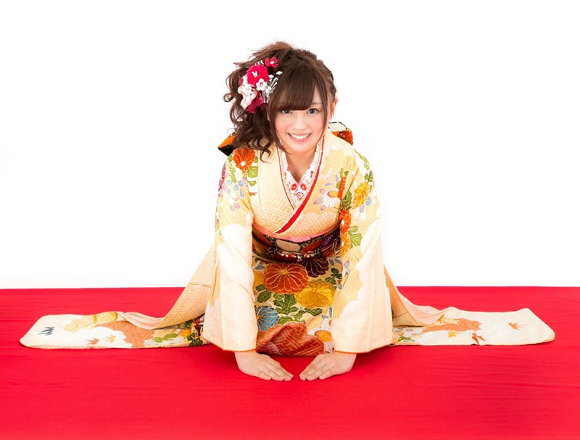
Foreign student’s biting comeback at book’s lofty title wins support online.
While Japanese etiquette isn’t nearly the minefield of potentially offensive faux pas that some people make it out to be, there are some complex aspects to polished manners in Japan. For example, most cultural guidebooks and language texts will teach you that after eating a meal, you’re supposed to say “Goshisosama deshita,” literally “It was a feast,” to show your appreciation to the person who prepared or paid for the meal.
What’s less widely known, though, is that if you buy dinner for someone, and they say “Goshiso-sama deshita” to you, you’re supposed to respond with “Osomatsu-sama deshita” (meaning “It was a coarse/humble meal”) in order to humbly deflect the praise. In all the years I’ve lived in Japan, though, I think I’ve actually heard someone say “Osomatsu-sama deshita” maybe a dozen times.
This raises the question: If there’s something that etiquette says you’re supposed to do, but hardly anyone does it, is it still etiquette? Twitter user @MIYAKO60611, who’s a student from Taiwan currently studying Japanese in Hiroshima, made his opinion on the matter crystal-clear when he stumbled across a Japanese-language book on Amazon, titled Nihonjin no Kyuwari ga Shiranai Nihon no Saho, or Japanese Etiquette that 90 Percent of Japanese People Don’t Know.
日本人の9割が知らなかったらそれはもう日本の作法じゃなくてお前らの作法のでは pic.twitter.com/gNsCSf8heF
— 京🇹🇼 (@MIYAKO60611) March 18, 2018
So what does @MIYAKO60611 think of that premise? According to his tweet:
“If 90 percent of Japanese people don’t know about it, it’s not Japanese etiquette. It’s just THE AUTHOR’S etiquette.”
With roughly 30,000 likes for the tweet, that’s a statement a lot of Japanese Twitter users would second, as they left comments including:
“Like they say, ‘Times change.’”
“People who earn a living through etiquette lessons can’t make money if there are manners people don’t know about, so they just make them up.”
“Now I want to write a book about Japanese Etiquette that 100 Percent of Japanese People Don’t Know.”
The publisher’s description for the 192-page book, from author Kiyotada Ogasawara, reads:
“Do you think of traditional Japanese manners and etiquette as stuffy and constricting? But since the Kamakura era of 800 years ago, ‘proper Japanese etiquette’ has existed for the purpose of efficient, waste-free behavior, making it beautiful and not physically tiring. [This book answers] ‘Why is it incorrect to clasp your hands in front of you when bowing?’ ‘Why is it bad manners to use both hand to open a sliding door?'”
Setting aside the logic behind trying to dispel a stiffly formal stigma by invoking centuries-old behavior standards from what was, even by Japanese standards, a rigorously spartan period of feudal rule, it looks like the real aim of the book isn’t to explain and promote Japanese etiquette that was never known, but that has fallen out of use. Viewed in that light, a few Twitter commenters have come to the book’s defense:
“Not to get all serious, but if 90 percent of modern Japanese people don’t know about those etiquette points, there’s a chance of those traditions crumbling, so maybe this book is an attempt to preserve them.”
“I think they should have called the book Etiquette that 90 Percent of Japanese People Have Forgotten.”
For those who are interested, the book can be ordered here through Amazon, where it’s priced at 691 yen (US$6.50) for the paper version or 626 for digital. If nothing else, it should be a good window into Japanese traditions. Just don’t expect too many people to appreciate, or even notice, when your manners are “correct.”
Source: Twitter/@MIYAKO60611 via Hachima Kiko
Top image: Pakutaso
Follow Casey on Twitter, where he always makes a point of saying “Osomatsu-sama.”

 Rules of tea, business cards, and bowing – 10 Japanese business manners young people are tired of
Rules of tea, business cards, and bowing – 10 Japanese business manners young people are tired of Japan bad train manners survey reminds us of three things to watch out for while riding the rails
Japan bad train manners survey reminds us of three things to watch out for while riding the rails A piece of Japanese business manners that many Japanese people could do without
A piece of Japanese business manners that many Japanese people could do without Only one demographic in survey is happy about Japan’s workplace obligation Valentine’s chocolate
Only one demographic in survey is happy about Japan’s workplace obligation Valentine’s chocolate Six ways to avoid looking like an “idiot” when shopping at Japanese convenience stores
Six ways to avoid looking like an “idiot” when shopping at Japanese convenience stores Foreigner’s request for help in Tokyo makes us sad for the state of society
Foreigner’s request for help in Tokyo makes us sad for the state of society Seaside scenery, history, and so many desserts on Yokohama’s Akai Kutsu【Japan Loop Buses】
Seaside scenery, history, and so many desserts on Yokohama’s Akai Kutsu【Japan Loop Buses】 Ghibli Park now selling “Grilled Frogs” from food cart in Valley of Witches
Ghibli Park now selling “Grilled Frogs” from food cart in Valley of Witches Mt. Koya planning to instate visitor’s tax to cope with huge tourist numbers
Mt. Koya planning to instate visitor’s tax to cope with huge tourist numbers Japanese city loses residents’ personal data, which was on paper being transported on a windy day
Japanese city loses residents’ personal data, which was on paper being transported on a windy day Smash Bros. director Sakurai stabs Kirby in the face, has delicious justification for it
Smash Bros. director Sakurai stabs Kirby in the face, has delicious justification for it Is Japan’s massive Shizuoka steak sandwich really as delicious as it looks in promo photos?
Is Japan’s massive Shizuoka steak sandwich really as delicious as it looks in promo photos? Red light district sushi restaurant in Tokyo shows us just how wrong we were about it
Red light district sushi restaurant in Tokyo shows us just how wrong we were about it Pokémon Sleep camping suite and guestrooms coming to Tokyo Hyatt along with giant Snorlax burgers
Pokémon Sleep camping suite and guestrooms coming to Tokyo Hyatt along with giant Snorlax burgers Studio Ghibli now sells plush toys seen on Howl’s bed from Howl’s Moving Castle
Studio Ghibli now sells plush toys seen on Howl’s bed from Howl’s Moving Castle McDonald’s new Happy Meals offer up cute and practical Sanrio lifestyle goods
McDonald’s new Happy Meals offer up cute and practical Sanrio lifestyle goods Japanese ramen restaurants under pressure from new yen banknotes
Japanese ramen restaurants under pressure from new yen banknotes French Fries Bread in Tokyo’s Shibuya becomes a hit on social media
French Fries Bread in Tokyo’s Shibuya becomes a hit on social media Studio Ghibli releases new action figures featuring Nausicaä of the Valley of the Wind characters
Studio Ghibli releases new action figures featuring Nausicaä of the Valley of the Wind characters New private rooms on Tokaido Shinkansen change the way we travel from Tokyo to Kyoto
New private rooms on Tokaido Shinkansen change the way we travel from Tokyo to Kyoto Tokyo Tsukiji fish market site to be redeveloped with 50,000-seat stadium, hotel, shopping center
Tokyo Tsukiji fish market site to be redeveloped with 50,000-seat stadium, hotel, shopping center Beautiful Ghibli sealing wax kits let you create accessories and elegant letter decorations【Pics】
Beautiful Ghibli sealing wax kits let you create accessories and elegant letter decorations【Pics】 Studio Ghibli releases Kiki’s Delivery Service chocolate cake pouches in Japan
Studio Ghibli releases Kiki’s Delivery Service chocolate cake pouches in Japan New definition of “Japanese whiskey” goes into effect to prevent fakes from fooling overseas buyers
New definition of “Japanese whiskey” goes into effect to prevent fakes from fooling overseas buyers Our Japanese reporter visits Costco in the U.S., finds super American and very Japanese things
Our Japanese reporter visits Costco in the U.S., finds super American and very Japanese things All-you-can-drink Starbucks and amazing views part of Tokyo’s new 170 meter-high sky lounge
All-you-can-drink Starbucks and amazing views part of Tokyo’s new 170 meter-high sky lounge More foreign tourists than ever before in history visited Japan last month
More foreign tourists than ever before in history visited Japan last month New Pokémon cakes let you eat your way through Pikachu and all the Eevee evolutions
New Pokémon cakes let you eat your way through Pikachu and all the Eevee evolutions Disney princesses get official manga makeovers for Manga Princess Cafe opening in Tokyo
Disney princesses get official manga makeovers for Manga Princess Cafe opening in Tokyo Sales of Japan’s most convenient train ticket/shopping payment cards suspended indefinitely
Sales of Japan’s most convenient train ticket/shopping payment cards suspended indefinitely Sold-out Studio Ghibli desktop humidifiers are back so Totoro can help you through the dry season
Sold-out Studio Ghibli desktop humidifiers are back so Totoro can help you through the dry season Japanese government to make first change to romanization spelling rules since the 1950s
Japanese government to make first change to romanization spelling rules since the 1950s Ghibli founders Toshio Suzuki and Hayao Miyazaki contribute to Japanese whisky Totoro label design
Ghibli founders Toshio Suzuki and Hayao Miyazaki contribute to Japanese whisky Totoro label design Doraemon found buried at sea as scene from 1993 anime becomes real life【Photos】
Doraemon found buried at sea as scene from 1993 anime becomes real life【Photos】 Tokyo’s most famous Starbucks is closed
Tokyo’s most famous Starbucks is closed One Piece characters’ nationalities revealed, but fans have mixed opinions
One Piece characters’ nationalities revealed, but fans have mixed opinions We asked a Uniqlo employee what four things we should buy and their suggestions didn’t disappoint
We asked a Uniqlo employee what four things we should buy and their suggestions didn’t disappoint Princesses, fruits, and blacksmiths: Study reveals the 30 most unusual family names in Japan
Princesses, fruits, and blacksmiths: Study reveals the 30 most unusual family names in Japan Should you add wasabi to your soy sauce at a sushi restaurant?
Should you add wasabi to your soy sauce at a sushi restaurant? Nobel Prize for Literature eludes Japan’s Haruki Murakami yet again, and he couldn’t care less
Nobel Prize for Literature eludes Japan’s Haruki Murakami yet again, and he couldn’t care less Majority of younger Japanese people in survey respect less than 30 percent of their old coworkers
Majority of younger Japanese people in survey respect less than 30 percent of their old coworkers Anime-style magical girl video series promotes good subway manners…in Los Angeles?!?【Videos】
Anime-style magical girl video series promotes good subway manners…in Los Angeles?!?【Videos】 Train etiquette poster features legendary Japanese folklore hero in an unusual plot twist
Train etiquette poster features legendary Japanese folklore hero in an unusual plot twist “Scary” mass of idol fans break through security at 2016 Tokyo Idol Festival 【Video】
“Scary” mass of idol fans break through security at 2016 Tokyo Idol Festival 【Video】 Don’t bother, ladies: Survey reveals most Japanese guys don’t want your Valentine’s chocolate
Don’t bother, ladies: Survey reveals most Japanese guys don’t want your Valentine’s chocolate 10 types of people Japanese women hate sitting next to on public transportation【Video】
10 types of people Japanese women hate sitting next to on public transportation【Video】 Japanese Twitter user creates magical Peter Pan book with lifespan of its own, and it’s brilliant
Japanese Twitter user creates magical Peter Pan book with lifespan of its own, and it’s brilliant Crazy new port-o-potty design is the most random thing we’ve seen in a long time
Crazy new port-o-potty design is the most random thing we’ve seen in a long time The Japanese language has a special honorific suffix just for talking to athletes
The Japanese language has a special honorific suffix just for talking to athletes Infographic shows how working culture differs across the globe
Infographic shows how working culture differs across the globe “We wasted so much time in English class” — Japanese Twitter user points out major teaching flaw
“We wasted so much time in English class” — Japanese Twitter user points out major teaching flaw Blink and you’ll miss what riled racists in this Japanese McDonald’s ad 【Video】
Blink and you’ll miss what riled racists in this Japanese McDonald’s ad 【Video】 The top 10 traits of “domestic” women in Japan, according to Japanese men
The top 10 traits of “domestic” women in Japan, according to Japanese men
Leave a Reply